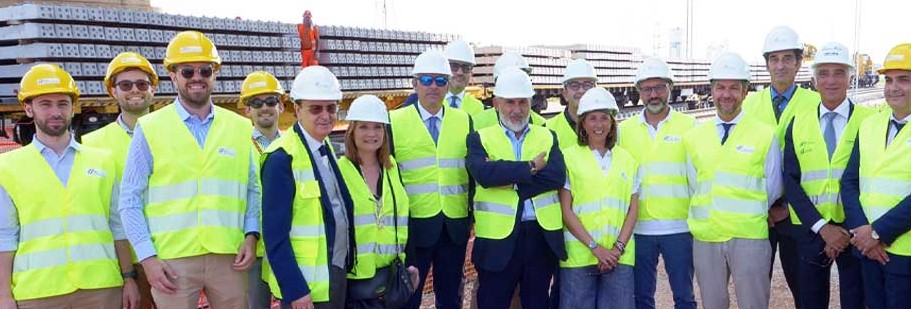Brescia Est - Verona HS Line
Italferr at the high-speed railway construction sites

With the start of track laying operations and the civil engineering works nearing completion, Italferr CEO Dario Lo Bosco, with the top management of FS, RFI and Trenitalia, visited the construction sites of the Brescia Est - Verona high-speed/high-capacity line, a project that is now 83% complete.
Also present at the site was the Italferr team, with the Engineering & Operations Manager, and the team involved in the site management and supervision of the project.
The project was commissioned by Rete Ferroviaria Italiana, as part of a broader plan to upgrade the national high-speed network, and is scheduled for completion (for NRRP purposes), by June 2026.
The construction of the Brescia Est - Verona high-speed/high-capacity section, in fact, is one of the projects financed by the NRRP and is part of the Mediterranean Corridor of the TEN-T Network, which will connect the ports of southern Iberia with Eastern Europe, across southern France, northern Italy, Slovenia and Croatia.
The new Brescia Est - Verona high-speed/high-capacity railway section of the line is approximately 48 kilometres long, including the 2.2 kilometres of the “Verona Merci” branch connecting with the Verona - Brennero line. An approximately 30 km long stretch of the line runs alongside the A4 motorway, while approximately 8 km run in parallel with the existing Milan-Venice mainline railway route.
The route crosses the regions of Lombardy and Veneto, passing through 11 municipalities in the provinces of Brescia, Verona and Mantua, in the latter case only for road works. The line begins at Mazzano, where it branches off from the Milan-Venice mainline railway at Bivio Mazzano, and then continues towards Verona – on embankments (23.4 km), through tunnels (16.8 km) and on viaducts (0.9 km) – to Bivio Lugagnano, where it reconnects with the conventional mainline railway.
The route crosses the Brescia-Padua motorway at two points, with two underpasses with an overhead clearance of approximately 10 m. The underpasses, built without suspending motorway traffic, represented one of the key engineering challenges of the project.
The first underpass, at Lonato del Garda, approximately 400 m long, was built using a 10 m diameter TBM-EPB tunnel boring machine, which excavated and lined the two tunnel tubes, each approximately 4.8 km long, with prefabricated segments. The excavation of each of the two tubes of the underpass tunnel required approximately two weeks of work, with peak excavation rates of 30 m/day.
The second underpass, at Sommacampagna, was built using conventional excavation methods, consisting of excavators equipped with demolition hammers, after the excavation face had been consolidated using high-pressure cement injections (jet grouting). In this case, a temporary diversion of the motorway lanes was used to avoid having to excavate underneath the motorway traffic.
The civil engineering works are almost complete, and the installation of technological equipment and track laying are currently under way. The latter involves using a track-laying train to lay the ballast, position and secure the sleepers and lay the rails. Launched in April 2025, the train has so far laid 17 km of track (17 km of up track and 17 km of down track).